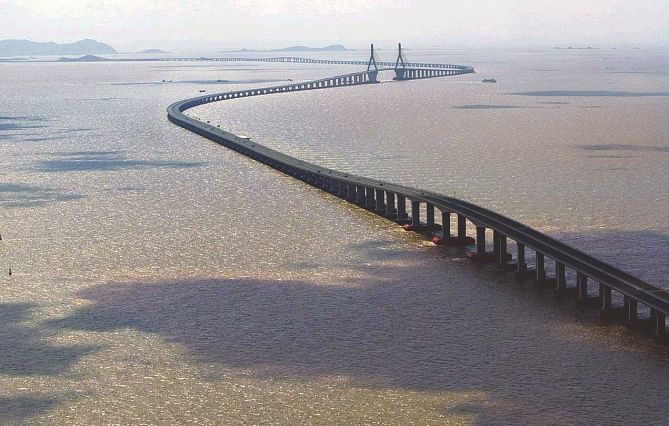Chinese 'Silk Road' initiative for wider connectivity

President Xi Jinping of China called for joint development of an "Economic Belt along the Silk Road" and a "Maritime Silk Road of the 21st Century" during his separate visits to Kazakhstan and Indonesia in September and October 2013. These initiatives aimed at deepening reform and intensifying neighborhood diplomacy for peace, development and cooperation within our complex international and regional landscape.
Chinese recognition of the benefit potential of greater dynamism based on constructive consensus as reflected in the symbolical 'Silk Road' was consistent with UNESCO's resolution adopted during its 1997 General Assembly Session. Chinese interpretation was that cooperation was the critical key engine of global growth and the essential driver for a world that has now evolved its own unique aspects of multi-polarization and economic globalization. It is this background that prompted the Chinese President to point out that the "Belt" and "Road" initiatives linking the past with the present and covering China and other countries, had an inclusive scope that would foster unity of purpose and commitment.
It is generally agreed that compared with those in Europe and North America, regional cooperation in Asia remains inadequate, with uneven development and poor connectivity among Asia's sub-regions. This poses a serious obstacle to deeper regional cooperation. It is this scenario that encourages China to believe that “One Belt and One Road” initiatives will contribute to greater connectivity and complementarities across the sub-regions, and help the establishment and improvement of Asia's supply chain, industrial chain and value chain. Success in this regard would however require effective linkages in harmonizing planning, in improving transport network infrastructure, in facilitating investment, in promoting trade settlement, in local currencies and in enhancing exchange between peoples. If properly implemented, this would make economies more dynamic and more resilient to fend off risks.

The Chinese leadership believes that “One Belt and One Road” initiatives would promote infrastructure development and systemic innovation, necessary for an improved business environment, unimpeded flow of production factors and their improved distribution both in the development of landlocked countries and the remote areas of other countries. It is also argued that this will help promote systematic innovation, increased capital flow, lowering of costs and removal of trade and investment barriers. This in turn will strengthen people-to-people exchanges among all countries.
The importance of the “Economic Belt along the Silk Road” and the “Maritime Silk Road” has also been evidenced for South Asia through the initiative undertaken through the Bangladesh-China-India-Myanmar Economic Corridor (BCIM-EC). These countries through consensus are trying to focus their priority in advancing multi-modal regional connectivity in transportation, telecommunication, power and energy, trade and investment, sustainable development and people-to-people exchange. As correctly observed by former Chinese Ambassador to Bangladesh Li Jun, this effort based on 'economic complementarities' should 'enhance mutual understanding and trust and further unlock vast economic potential, and secure lasting peace, stability and prosperity for the people in the region'.
It is felt that these initiatives, by covering multiple provinces and autonomous regions in China and being consistent with the country's regional development strategy, the new urbanization strategy and the opening-up strategy, will serve as a big booster for China being able to effectively intensify its foreign policy connectivity with the countries associated with“One Belt and One Road” initiatives.
However, in this context they have also pointed out that this initiative is not intended to overlap or compete with existing cooperation mechanisms of the Shanghai Cooperation Organization, the Eurasian Economic Community or the ASEAN plus China process. They are reiterating that this will only enrich these existing mechanisms and make them more effective and mutually reinforcing.
The writer is a former Ambassador and Chief Information Commissioner, is an analyst specialized in foreign affairs, right to information and good governance, can be reached at <[email protected]>

 For all latest news, follow The Daily Star's Google News channel.
For all latest news, follow The Daily Star's Google News channel. 



Comments